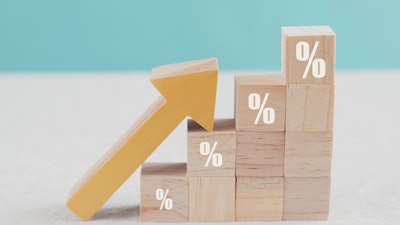
Given the current volatile economy and rising inflation, a company’s inaction regarding pricing shifts may lead to long-term negative consequences. In the United States, inflation remains at the highest rate seen in decades. Consumer prices rose at an annual pace of 8.3 percent in April. The reasons behind this soaring inflation include supply constraints that are driving up raw material costs and a tight labor market, leading to increased labor costs. Energy prices alone have soared 30.3 percent over the past 12 months.
To mitigate the effects of inflation, industrial companies need to react swiftly and decisively. Price increases are the most effective tool that companies can leverage. However, increasing prices comes with its own challenges: How can industrial companies increase prices successfully without alienating customers? In this article we explore the steps of our proven nine-step guide. But first, let’s take look at the current situation.
Timid Price Increases May Not Work
To assess the market, Simon-Kucher & Partners conducted an extensive study of industrial companies that generated 1,266 responses. Key takeaways include that 30 percent have not adjusted pricing for inflation and have no plans to do so. That’s despite upstream inflation far exceeding the average consumer inflation of around eight percent. Inflation is trending up to 17 percent for agricultural machinery and equipment, 19 percent for new industrial building construction, 26 percent for chemical and allied products, and 39 percent for fuel and related products and power.
The potential consequences of inaction could be devastating. Per Jeb Wilson, Senior Director at Simon-Kucher, “More than ever before, industrial executives and managers are having to take difficult and frequent actions related to the transfer of rising costs to their customers.”
One of the main concerns that stops companies from increasing prices is the possible loss of customers and/or volume. According to our survey, 30 percent of industrial companies are unwilling to accept customer/volume losses due to price increases. Another 34 percent are willing to accept loss, but only if it falls within specific limits.
9 Steps to Increase Prices While Mitigating Loss
Even though a certain amount of customer/volume loss should be anticipated, methods to help avoid loss do exist. Our nine-step framework breaks down the process into three phases:
Phase 1: Configuring the target price level.
- Perform a contract review. To make sure that new price increases do not impair any contract agreements, companies must review existing contracts to identify addressable sales. Companies should set the timing and frequency for price increases (per product and contract) according to the already agreed upon conditions, or try to change them.
- Define the Campaign Objective. When trying to figure out how much to raise prices, the most common mistake is to rely on instincts instead of facts. An analysis of existing data on cost development and price potential achieves better results. Companies should consider only relevant revenues and coordinate the selected targets with management.
- Outline customer/product-specific goals. After assessing how much price increase potential exists, managers need to decide which products should have a price increase and for which customers. Raising prices on all products or all customers is not recommended and ignores the potential of products that can be priced above average. Instead, companies should differentiate based on several criteria such as ease of increase, profitability, or cost-to-serve.
Phase 2: Preparing for implementation.
- Provide alternatives and escalation rules. Once price negotiations begin, sales teams need to have a clear understanding of what they can offer. Sales guidelines and approval rules in case of deviations help sales teams achieve optimal outcomes. Companies should also prepare alternatives such as alternative pricing models, price clauses, and cheaper options.
- Introduce sales incentives. Managers should consider rewarding successful price increases (in addition to existing compensation plans) to ensure optimal commitment to the price increase target. A mix of financial and non-financial incentives – such as communicating successful results to the entire team – will increase price realization with little or no budget impact.
- Improve communication and training. Untrained salespeople greatly increase the risk of failed price negotiations. Instead, companies should invest time in communicating price increases and procedures internally as well as externally.
Phase 3: Implementing.
- Create supporting materials. During the rollout of the pricing initiative, managers should ensure that sales teams have everything they need and are able to address every possible customer question. Preparing battle cards, argument guides, concessions, and negotiation plans for each customer and product are recommended. This way, companies can avoid reactive communication that leads to customer discussions about the new price.
- Define KPIs and project plan. To analyze if a price increase initiative is successful, companies should monitor relevant KPIs, such as deviation from the pricing guideline, migrated revenue, and the timeline for negotiations. Establishing these KPIs early enables effective monitoring and creates a foundation for evaluating price realization.
- Implement monitoring. After defining the KPIs, firms must create a real-time control of the implementation progress. This includes defining actions in advance to deal with compliance or deviation from processes and results.
For more information, or to view additional insights from the Global Inflation Study, please visit www.simon-kucher.com.






















